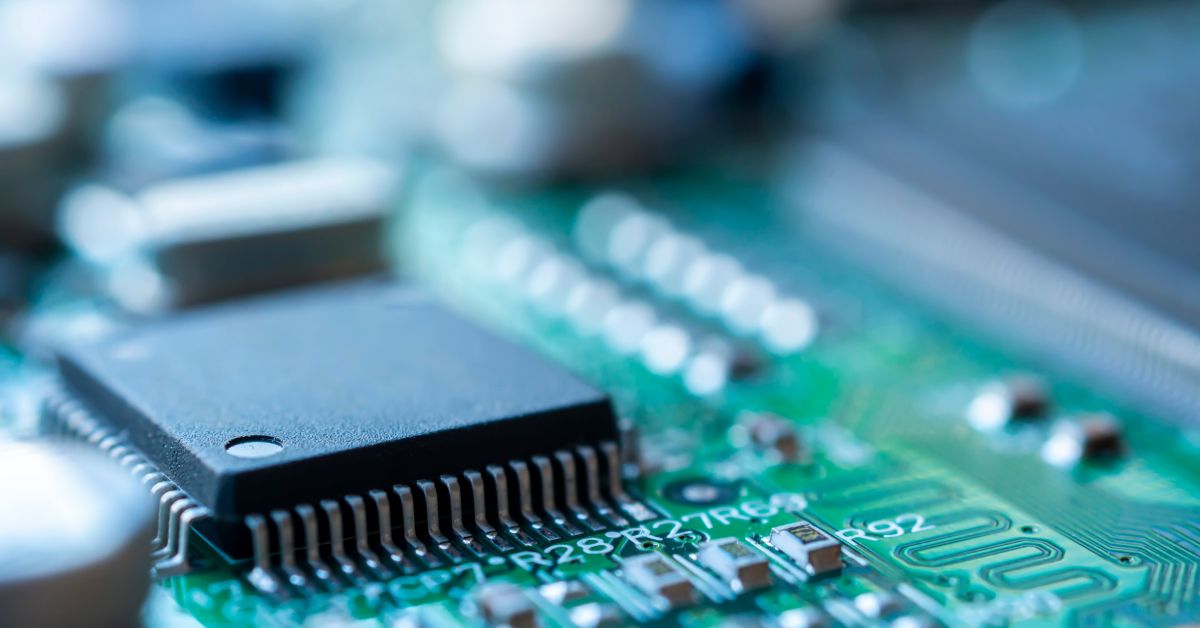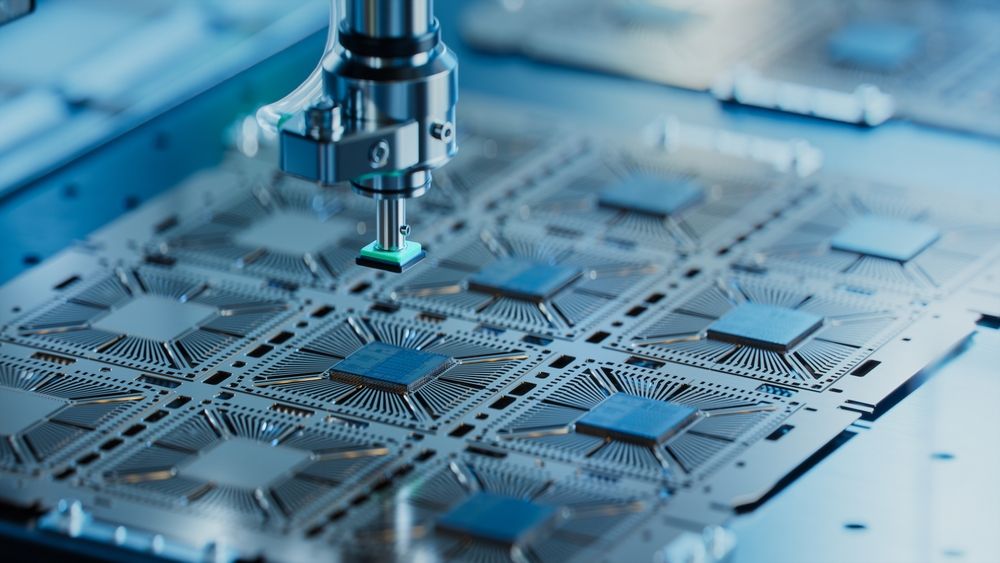9 Different Types of Integrated Circuits and Their Applications in Modern Electronics

They say the world is shrinking, and nowhere is this more evident than in our electronic devices. What once took up a whole room now fits in the palm of your hand. That's partly thanks to integrated circuits (ICs), the heartbeats of modern electronics. From the smartphone in your pocket to the car you drive, there are many integrated circuits, making technology smarter, faster, and more efficient.
Let's explore this fascinating world of integrated circuits. Whether you're a seasoned engineer, a budding inventor, or just a tech enthusiast, understanding the types of integrated circuits and their functions is fundamental to appreciating how electronic devices function and evolve. We'll explore everything from microprocessors to memory chips, and operational amplifiers to logic circuits, giving you a clearer picture of these miniature marvels that power our electronic world. Get ready to unlock the secrets of integrated circuits.
1. Clock & Timing
These ICs generate precise timing signals required by digital ICs to synchronize operations. Clock and timing ICs include everything from numerically controlled clocks to complex timing solutions like PLLs (Phase-Locked Loops) and oscillators.
Applications: Used in devices that require precise timing, such as computers, telecommunications equipment, and embedded systems.
2. Data Converter ICs
Data converter ICs are essential for translating analog signals into digital data and vice versa. This category includes ADCs (Analog-to-Digital Converters) and DACs (Digital-to-Analog Converters). This category also includes interface converter ICs, which translate data between standardized formats, essentially bridging two different interfaces that would normally be incompatible (e.g., SPI and USB).
Applications: Crucial in digital audio systems, medical imaging, and data acquisition technologies.
3. Embedded Processors and Controllers
These ICs handle specific tasks in embedded systems, from simple control operations to complex algorithm processing. Embedded processors and controllers encompass microprocessors, microcontrollers, DSPs (Digital Signal Processors), and more.
Applications: Found in automotive electronics, consumer electronics, and industrial control systems.

4. Interface ICs
Interface ICs manage and facilitate communication between various components or systems. These include serial and parallel interface ICs, USB controllers, and Ethernet controllers.
Applications: Integral in ensuring connectivity in systems ranging from personal computers to industrial machinery.
5. Linear Integrated Circuits
The linear integrated circuits category encompasses the broadest variety of integrated circuits. It includes sensors, amplifiers, filters, and other analog ICs. These ICs may also have a digital interface to communicate with an embedded processor.
Applications: Widely used in audio and video equipment, RF and wireless technologies, and sensor interfacing.

6. Logic ICs
These ICs perform ancillary digital computations and logical operations that cannot be implemented in an embedded processor. Logic ICs include logic gates, buffers, drivers, and receivers.
Applications: Used to implement custom logic operations in digital electronics that cannot be implemented in a standard communication interface.
7. Memory Chips
Memory chips are digital integrated circuits that store data and instructions for CPUs and other processing units. This category includes RAM, ROM, EEPROM, and flash memory.
Applications: Used for data retention in digital systems that do not include sufficient on-chip memory in an embedded processor.
8. Power Management ICs
These ICs are used to regulate and monitor power distribution electronic devices. Power management ICs include standalone voltage regulators, battery management ICs, and power conversion devices.
Applications: Critical for ensuring power efficiency and safety in consumer electronics, automotive systems, and renewable energy solutions.

9. RF Semiconductors & Devices
These ICs deal with high-frequency radio signals. RF semiconductors and devices synthesize, manipulate, transmit, and receive radio frequencies.
Applications: Central in wireless communication systems, including cellular telephones, satellite communications, and radar systems.
Integrated Circuits in Advanced Technologies
ICs are the primary components creating meaningful functionality and user experiences in modern electronic products. Semiconductor manufacturers often design new ICs products that help drive adoption of emerging technologies and enable a range of new products. Their ability to process complex algorithms quickly and efficiently makes them indispensable in today's tech-driven world.
AI and Machine Learning
Digital integrated circuits handle the massive computational demands of AI and machine learning. This includes GPUs (Graphics Processing Units) for inference and training of large AI models in data centers, and scales down to TPUs (Tensor Processing Units), FPGAs, and microprocessors providing AI compute in embedded devices. Additional components are also needed to support the main processors providing AI compute, such as PMICs and memory.
Internet of Things (IoT)
IoT devices often integrate sensors, connectivity modules, and microcontrollers, all of which are based on IC technology. These components work together to collect data, connect to other devices or networks, and perform specific actions based on real-time information. Examples include:
- Microcontrollers: These are used extensively in IoT devices to handle data collected from sensors, control device operations, and execute communication protocols.
- RF and Connectivity ICs: These ICs, including Bluetooth chips, Wi-Fi modules, and NFC (Near Field Communication) tags, allow IoT devices to communicate and transfer data securely and efficiently.
ICs are integral to smart home devices, such as thermostats that learn user preferences and security systems that are controlled remotely. They're also vital in industrial IoT (IIoT), where they help monitor manufacturing processes, track assets, and manage supply chains efficiently.
Contribution to Emerging Technologies
ICs' scalability and versatility make them ideal for developing and enhancing emerging technologies. As technology evolves, the demand for smaller, faster, and more energy-efficient ICs grows. This demand drives continual innovations in IC design and fabrication, which in turn fuel advancements across technology sectors.
From wearable technology that monitors health metrics to smart cities that optimize energy use and traffic flows, ICs are the silent yet powerful force behind many of the modern world's technological leaps.
How Octopart Streamlines Sourcing Integrated Circuits for Professionals
Having quick access to component information and reliable sourcing options is crucial. Octopart excels in providing professionals with the tools they need to find, compare, and acquire integrated circuits efficiently and effectively.
Streamlined Search and Comparison
Octopart's comprehensive search engine allows users to quickly find specific integrated circuits across a vast database of components from hundreds of suppliers. Professionals can narrow search results using advanced filtering options based on parameters such as performance characteristics, manufacturer, and compliance standards. Key features include:
- Search Functionality: Input part numbers or keywords to find exact matches or relevant results.
- Up-to-Date Pricing and Availability: One of Octopart's standout features is its ability to provide up-to-date pricing and availability information from multiple distributors. This ensures that users have access to the most recent information to help them make an informed decision quickly.
- Create a Bill of Materials (BOM): Use the BOM Tool to compare pricing across distributors, quickly identify out-of-stock or obsolete parts, and instantly create carts on distributor websites to streamline your purchases.
- Access to Detailed Datasheets: Octopart provides direct links to detailed datasheets for each integrated circuit. These datasheets are crucial for engineers and designers as they contain necessary technical specifications, application notes, and compliance information.
- Design Resources: Many parts pages contain links to available reference designs from the manufacturer and CAD models for use in PCB design software.
Component Sourcing Revolutionized with Octopart
Octopart's advanced algorithm transforms the search experience, equipping engineers and designers with an extensive array of suppliers, pricing, availability, and datasheets for more than 72 million components.
Source All Types of Integrated Circuits at Octopart
Whether you're designing the next big thing in tech or optimizing existing systems, make Octopart your go-to site for sourcing all types of integrated circuits. With our extensive database, up-to-date information on pricing and availability, and easy access to detailed datasheets, you have all the tools necessary to make informed decisions swiftly and efficiently.
FAQs: Types of Integrated Circuits
Below, we've answered a few common questions about different types of integrated circuits.
How do integrated circuits contribute to advancements in fields like AI and IoT?
Integrated circuits enhance AI by quickly processing complex algorithms and massive data sets. For IoT, they enable devices to process data, connect seamlessly, and operate autonomously, integrating real-time decision-making into everyday objects.
What is the role of microprocessors and how do they differ from other types of integrated circuits?
Microprocessors are versatile integrated circuits that perform the core functions of a computer's CPU, executing a broad range of instructions and managing multiple tasks, unlike other ICs designed for specific functions.
What types of integrated circuits does Octopart source?
Octopart sources thousands of integrated circuits from all the top manufacturers. Choose from various types of ICs, from power management ICs to interface ICs. All are supported with detailed datasheets and up-to-date availability.

